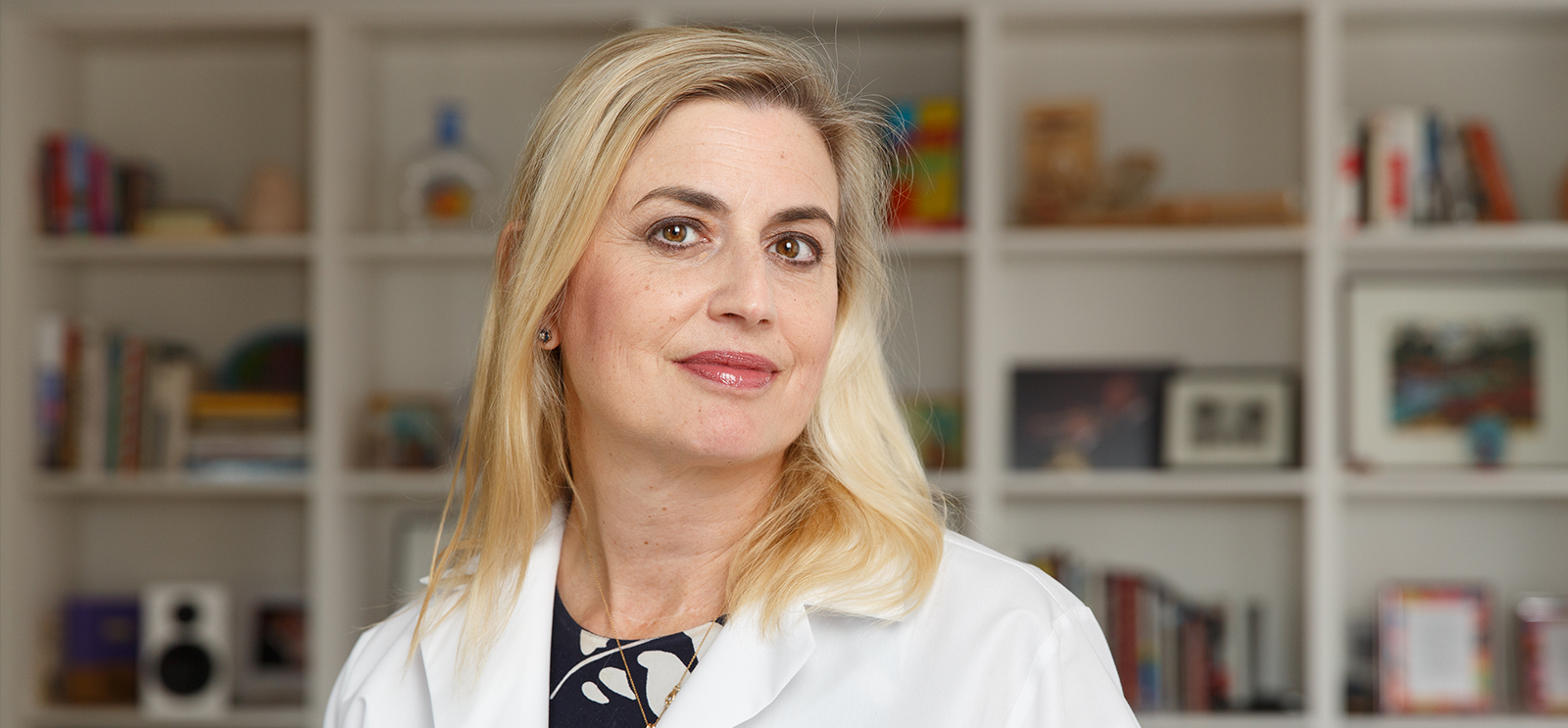
Recently Moline has been studying volunteer firefighters’ cancer risks. (Photography by Jason Smith)
Many 9/11 first responders still face serious health problems. Jacqueline Moline, AB’84, MD’88, has been helping them since 2001.
The official 9/11 disaster area radiates from the World Trade Center site to the western edges of Brooklyn, covering lower Manhattan and just brushing the tip of Governors Island.
Jacqueline Moline, AB’84, MD’88, was inside that ring, on Delancey Street, when she heard the first plane strike. “You could hear it, the impact,” she remembers. “Someone screamed, ‘We’re under attack.’”
She has spent the nearly 15 years since caring for the first responders who rushed in to help.
The new One World Trade Center is visible across the East River from the ninth-floor clinic Moline directs. The Queens World Trade Center Health Program monitors and treats a cohort of 3,000 police officers, construction workers, and other responders. (Firefighters have their own program, as do area residents.) Many are still affected by the million tons of toxic alkaline dust released in the Twin Towers’ collapse and by mental health issues.
Moline, the founding chair and professor of occupational medicine, epidemiology, and prevention at Hofstra Northwell School of Medicine, was a leader in organizing a long-term medical response plan to that unique occupational hazard, and she’s fought hard to secure and retain federal funding for her work. “They were exposed to a complex and unprecedented mixture of toxic chemicals, including dust, glass shards, and carcinogens like benzene, asbestos, and dioxin,” Moline told a congressional subcommittee in 2009, testifying on behalf of the James Zadroga 9/11 Health and Compensation Act, which provides funding to her clinic today.
After 9/11, first responders and others who worked at the disaster site almost all developed a severe, hacking, persistent cough. Today some have lung and sinus problems, sleep apnea, gastroesophageal reflux disease, and more complex conditions. “We’re not quite sure why … some people had a more robust reaction,” she says.
The mental toll included post-traumatic stress, anxiety, depression, and substance abuse. The new worry is cancer—responders have elevated rates of certain types, such as multiple myeloma. Still, most continue to work. “They’re getting by,” Moline says.
Moline has been concerned about the health of 9/11 first responders since the day of the attacks. That morning she headed to a nearby hospital, but they didn’t need extra help. There wasn’t much to be done when she was paged into her office at Mt. Sinai Hospital. But Moline and her occupational medicine colleagues were well aware of the dangers facing the responders at the World Trade Center.
In the 1993 truck bombing that the towers withstood, the local government asked the team, already experienced in asbestos exams, to give rescue and recovery workers respiratory clearance examinations. The evaluations are used to determine whether a worker is medically able to wear a respirator to prevent dust and smoke inhalation.
Moline had volunteers ready to perform the examinations in 2001, but the offer wasn’t taken up amid the overwhelming chaos. The lack of coordinated medical oversight was a tragic missed opportunity. The dust surrounding the rescue and recovery workers was as alkaline as bleach, yet after the first couple of days there were “truckloads of respirators that people weren’t using effectively.” Doctors could have shown workers how to use them correctly and ensured the masks fit. Moline thinks having experts on site “would have given more of a sense that you need to protect yourselves.”
On September 13, Moline and the Mt. Sinai occupational medicine team met at the home of their colleague Jaime Szeinuk to brainstorm what downstream effects responders might experience. “We felt we really, really have to think what’s going to happen down the road,” says Szeinuk, who works in Moline’s clinic today.
Backed by politicians, especially then-senator Hillary Clinton (“The program would not exist without her,” Moline says), their ideas turned into a treatment and monitoring program that laid the groundwork for today’s Centers for Disease Control and Prevention World Trade Center Health Program.
Now there are seven clinics in the New York City area where responders can go for checkups or federally funded medical treatment. A raft of research by Moline and others has since explored the effects of WTC exposure based on clinical findings and the health surveys responders periodically fill out.
The clinics are supported by the Zadroga Act, which passed in 2010 and was signed into law the next January. It dedicated billions to monitoring and treating both first responders and those exposed to the dust. Named for a policeman who worked at Ground Zero and later died of respiratory disease, the bill stalled in Congress until former Daily Show host Jon Stewart took up the cause.
Last year the Zadroga Act was extended to 2090, ensuring that Moline’s program will be there for the long haul. It’s a huge relief after a 15-year fight to protect health care for first responders: “Now that I don’t have to do that anymore, it’s kind of—oh my goodness, we have 75 years of funding!”
